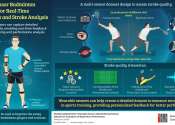Low-Power encrypted computing solutions
Smartphones, smartwatches, smart health devices, and pervasive smart sensors are becoming enmeshed in our daily lives, generating a flood of data that help keep us safe, healthy, and informed. As we see more sources of data, ...
Mar 4, 2022
0
33









